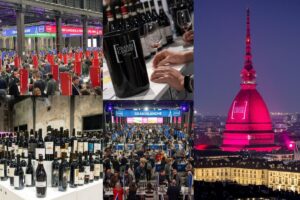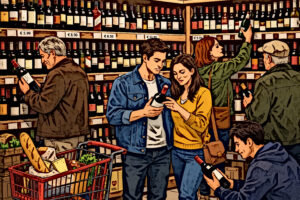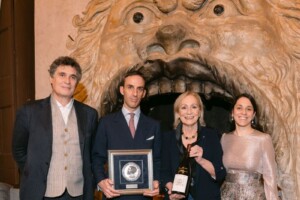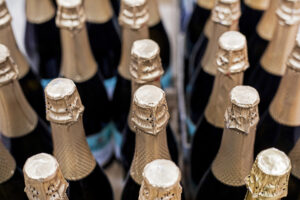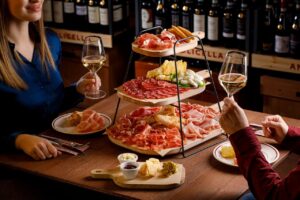Winenews, the most popular website among Italian wine enthusiasts, has mapped an identikit of the seven psychological profiles of Italian wine consumers. At a time when most seem to be talking about wine, here is a map created to extricate from the complex world of consumers of the country’s national drink a clearer picture of Bacchus’ true fans. A list of which wines and why, those who follow trends and those who set them, where drinkers prefer to buy ... .
The Enlightened - At the top of the classification are those who, after a long initiation period, after having studied guides, after years of frequenting the wine world, they have managed to form an autonomous taste and, strong in their disenchantment, they have moved well beyond the decrees by experts. They are not young and they have experience with older, aged wines from Italy and France. They choose to buy what they enjoy drinking, not what is fashionable or receives the most points. They like to buy bottles directly from producers, who they tend to know personally due to frequent trips to wine cellars of a chosen territory. They save the important vintages for at least a decade before drinking them, because otherwise they believe they would be committing “infanticide”. For some they will even wait 30 years or more, never forgetting, however, that they are not immortal.
The Professor - They have memorized all of the scores of the most important wine guides, enumerating the glasses and grape bunches that have been assigned by critics year after year. They subscribe to wine magazines (from Gambero Rosso to Wine Spectator), which they leaf through with the same excitement that others may have for pornographic magazines. They are ecstatic when they have a famous producer’s label in their hands, but they are also happy to play the role of the discoverer of new and small enological gems, that can then be recommended to “less knowledgeable” friends and acquaintances. They participate in blogs dedicated to the theme of wine and have in-depth discussions on the smallest of technicalities. They buy wines at their favorite wine boutiques, at auctions, or directly from producers after having closely documented the source, to the point of believing they know more even than the person who bottled the wine. They conserve wine in super-organized cellars, managed by an archiving system as complex as NASA technology. They may have huge refrigeration systems that have invaded garages, or in the worst of cases, even living rooms or kitchens. They continue to develop their learning with books, wine courses, exclusive tastings, all of which they are willing to spend good money for. But the biggest sums go to the acquisition of exclusive wines that are then shared with friends who are as enthusiastic about wine as they are.
The Amateur - They have recently become acquainted with the world of wine, and they move with circumspect, like those who would like to be part of an exclusive club but don’t know how to enter. Meanwhile, y attend wine tasting courses, they try to understand which names they should invest in to create their wine collection. They pretend to be experts with those who know less than them (and they try their hardest at restaurants when asked to choose from the wine list), but remain quiet as soon as true connoisseurs are present. Literature? Any of the plethora of publications that are now being published on the popular subject of wine and which usually tend to be written for beginners. They also buy wines that are available in supermarkets and hesitantly frequent wine bars.
The Trend Follower - If everyone’s saying that wine is trendy, then it is going to take some hard work to be at the head of this trend. This is the motto of the trendy wine drinker, who loves to be at the forefront of tendencies. If it is a man, he will throw himself into it for the glamour of it and as a way to seduce women. While for a woman, being a wine connoisseur allows her to distinguish herself from those women who stereotypically speak of hair and gossip. Experts at convincing others of what is really only a superficial knowledge of the wine culture, they manage to throw out very few but explosive notions on the subject. They also tend to hoard accessories - from professional extra-large wine glasses, to crystal decanters, and the latest generation wine corks - in order to impress friends and colleagues. They invest large amounts of money in brand name wines and those that are the most popular at the moment, which they uncork with nonchalance at any dining occasion. If tomorrow the wine trend should pass, they will give away their entire collection of enological items and quickly move on to the next trend.
The Health Nut - They follow a vegetarian or macrobiotic regime, or are simply obsessed with a healthy diet. They obviously don’t smoke and don’t drink hard liquor, but at the same time are definitely not against a glass of wine, a lifestyle choice that has now been supported by recent scientific research that recommends a moderate and regular consumption as a dietary factor for the prevention of numerous pathologies. They choose exclusively wines that are organic or biodynamic, and of whose origins they are absolutely certain. They avoid big brand names for niche production. They are less interested in the taste than the nutritional value, and they are willing to close an eye to wine that is not technically perfect in favor of its certification. And to tell the truth, it is probably not necessary to have a top wine to accompany a dinner of steamed vegetables, brown rice, and baked fish. The Conscious Shopper - They buy their wine at the supermarket, entrusting themselves to well-known brands, and without, obviously, spending large sums. They buy wines like they buy pasta or cookies, looking for the best quality-price relation. A group made up of homemakers, young single people, and fathers who go shopping and can’t resist taking home a bottle of wine, usually on a whim. They are usually the first to try a new Australian, Chilean, or Californian wine that has recently arrived on supermarket shelves, enological curiosities that go for about 5 euros per bottle. When confronted with an aged or rare bottle of wine, they do not hesitate to uncork it, with the approach “better to drink it one month before than three years after”.
The Indifferent Shopper - They have always drunk wine, even before it was trendy, and they will continue to do so regardless of what others decide. They drink regularly, at both lunch and dinner, and in good quantities. For them, there are only two types of wine: red and white. Wine is bought solely at supermarkets, in large bottles or boxes. Sometimes they may even buy from a trusted local producer (or at one of the ever growing number of shops that now sell wine on tap) to fill a demijohn or some other large container. Though this was a style that was very fashionable in the 60’s, it had long past. But it may now be coming back. In fact, though this tendency is most common among wine drinkers with lower income levels, it has also become a trend among other circles, including journalists and other cultural professionals, who have refuted the mythicyzing of wine and have created a movement that promotes the return to the simplicity of enjoying wine. These ideologists have even named themselves the Tavarnelle Club, after the most famous, and cheapest, boxed wine in Italy.
Copyright © 2000/2025
Contatti: info@winenews.it
Seguici anche su Twitter: @WineNewsIt
Seguici anche su Facebook: @winenewsit
Questo articolo è tratto dall'archivio di WineNews - Tutti i diritti riservati - Copyright © 2000/2025











